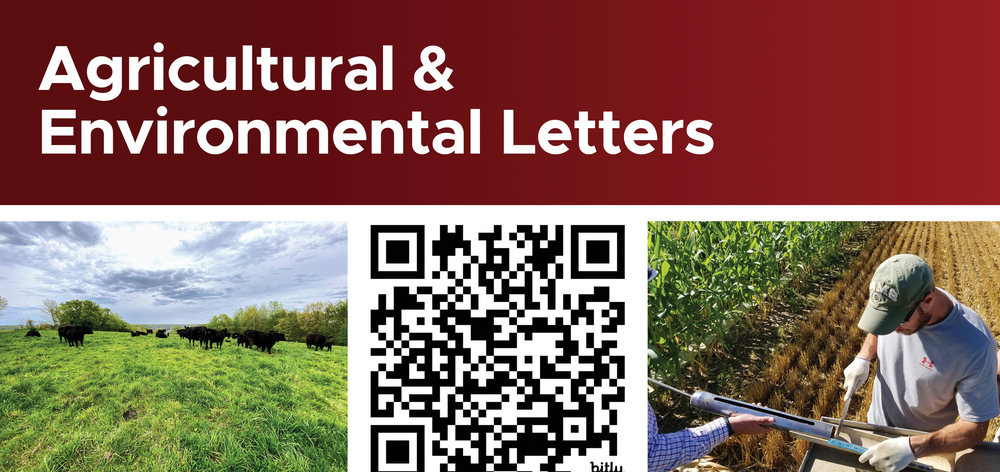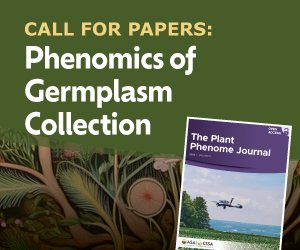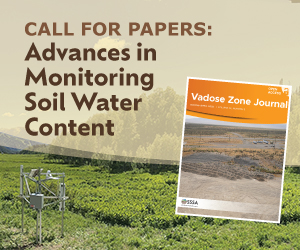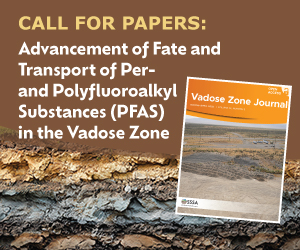One Health the Focus of New Collection of Papers

The World Health Organization defines “One Health” as an equitable approach used to integrate the health of people, animals, and the environment. This approach integrates many of the holistic soil, plant, and land management strategies used by research and extension personnel. A collection of 22 papers published in Agricultural & Environmental Letters brings together research letters, commentaries, and letters to the editor on topics related to One Health. These wide‐ranging papers cover topics from agroecology to toxic elements to integrated pest management. Below is a sampling of the topics included in this virtual issue (https://bit.ly/one‐health‐issue).
- In their commentary “Focusing the Future of Farming on Agroecology,” Franzluebbers et al. (2018) provide a crucial message for farming: “We should be seeking healing of our planet, not just less harm than in the past.”
- Miner et al. (2020) emphasize the importance of cooperation across disciplines. Beginning with the premise that soil health has been shown to be directly tied to food and nutritional security, water quality, human health, climate change mitigation/adaptation, and biodiversity, they conclude that testing the connections among soil health practices, soil health metrics, crop quality, crop yields, and yield stability is needed and “will require cooperation across diverse disciplines such as agronomy, soil science, crop physiology, and human and animal nutrition.”
- Hu et al. (2021) turn their attention from major rice‐growing regions, where toxic elements arsenic and cadmium have been found in rice, to small‐scale farms in the U.S. Northeast. They found that rice from these farms poses low risk for consumers and note the importance of testing under different soil conditions.
- A preliminary study by Waiker et al. (2022) shows a connection between urbanization and mercury levels in honey bees. The authors suggest that these pollinators may be useful biomonitors of mercury pollution.
The full collection of papers found in this virtual issue shows that the One Health approach can be a powerful way to create sustainable solutions to health threats.
References
Franzluebbers, A. J., Wendroth, O., Creamer, N. G., & Feng, G. G. (2020).Focusing the future of farming on agroecology. Agricultural & Environmental Letters, 5, e20034. https://doi.org/10.1002/ael2.20034
Miner, G. L., Delgado, J. A., Ippolito, J. A., & Stewart, C. E. (2020). Soil health management practices and crop productivity. Agricultural & Environmental Letters, 5, e20023. https://doi.org/10.1002/ael2.20023
Hu, R., Teasley, W. A., & Seyfferth, A. L. (2021). Paired soil and rice arsenic and cadmium from northeastern U.S. rice farms. Agricultural & Environmental Letters, 6, e20040. https://doi.org/10.1002/ael2.20040
Waiker, P., Ulus, Y., Tsui, M. T.-K., & Rueppell, O. (2022). Mercury accumulation in honey bees trends upward with urbanization in the USA. Agricultural & Environmental Letters, 7, e20083. https://doi.org/10.1002/ael2.20083
Text © . The authors. CC BY-NC-ND 4.0. Except where otherwise noted, images are subject to copyright. Any reuse without express permission from the copyright owner is prohibited.











